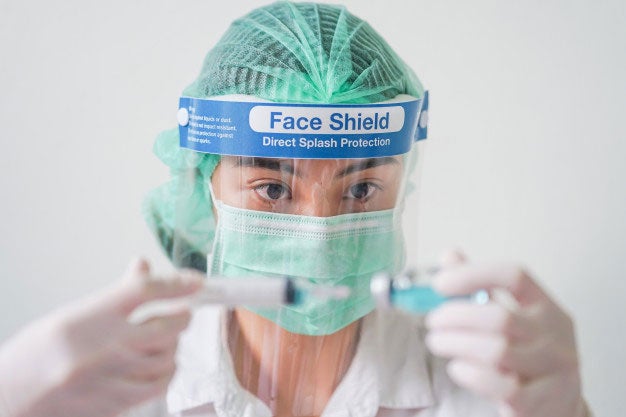Face Shields: PPE for Your Eyes and Face
Clear face shields serve as personal protective equipment for both your eyes and face. Though most commonly seen in scientific, medical, and dental settings, they have practical applications in home and school settings as well, particularly in the times of COVID-19. This guide details all you need to know about face shields so you can properly use them to help keep you safe and healthy.

Face Shield Features
Face shields are designed to be protective while remaining convenient and comfortable for wearers of all ages:
- Easy, adjustable elastic band for a secure fit
- Soft, high-density sponge for forehead comfort
- Durable, yet lightweight polyethylene material for all-day wear
- Anti-fog for a consistently clear view
- Touch-free protection to eliminate skin irritation, breathing difficulty, and need for constant adjustments
What Face Shields Protect Against
Shields offer protection against coughs, sneezes, spatter, wind, dust, debris, and harmful chemical splashes. They can be worn on their own, or paired with a face mask for additional respiratory protection in high risk environments.
Face Shield vs. Face Mask
What Should You Be Wearing?
Because face shields are touch-free, anti-fog, and generally more comfortable than protective face masks, people sometimes prefer shields to help protect from illness. However, these two similar forms of PPE are not interchangeable. Though face shields protect the wearer from the coughs, sneezes, and spatter of others, they don’t necessarily protect others from the respiratory spray of the wearer. Conversely, masks serve as a double barrier, protecting both the wearer and those around him, helping to slow the spread of illness.
In a work environment, employers will indicate whether a mask, shield, or both should be worn. If for personal protection, it comes down to preference, though it is recommended you do your research and follow up-to-date CDC guidelines for best practices.
How to Wear a Face Shield
As with any form of PPE, face shields work best when they are worn consistently and properly. Be sure to adjust the elastic so that the shield fits snugly yet comfortably around your head and across your forehead. The clear plastic shield should cover the full width and length of your face, extending towards your ears and slightly below your chin. There should be a comfortable gap between your face and the shield - allowing for touch-free protection.
How to Sanitize and Reuse a Face Shield
One great benefit of clear face shields is that they are reusable - as they can be properly sanitized - yet still maintain quality and clarity. When removing your shield, be sure not to touch the front and to wash your hands upon removal. To sanitize, simply wash your shield with soap and hot water or with alcohol wipes.
